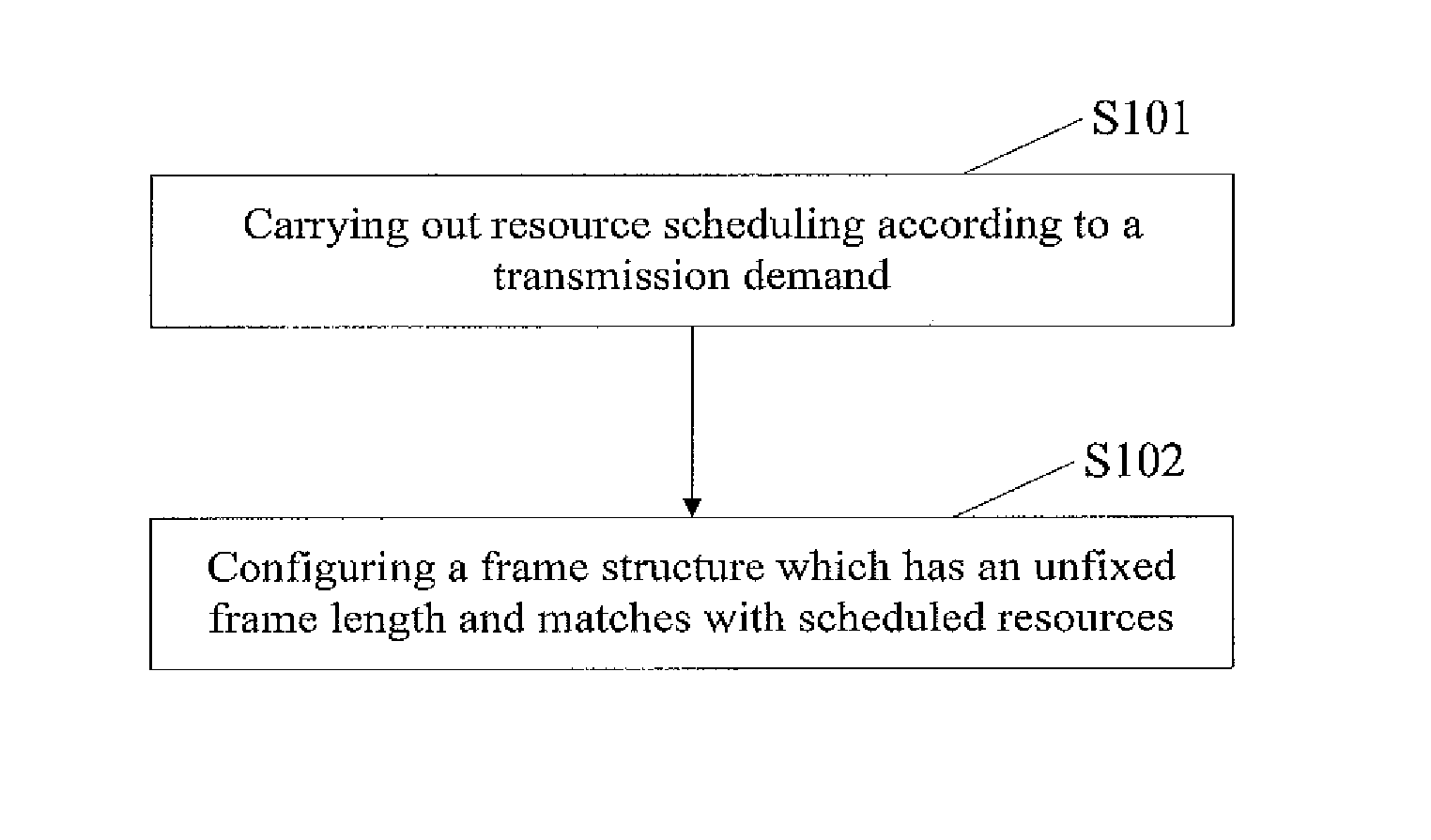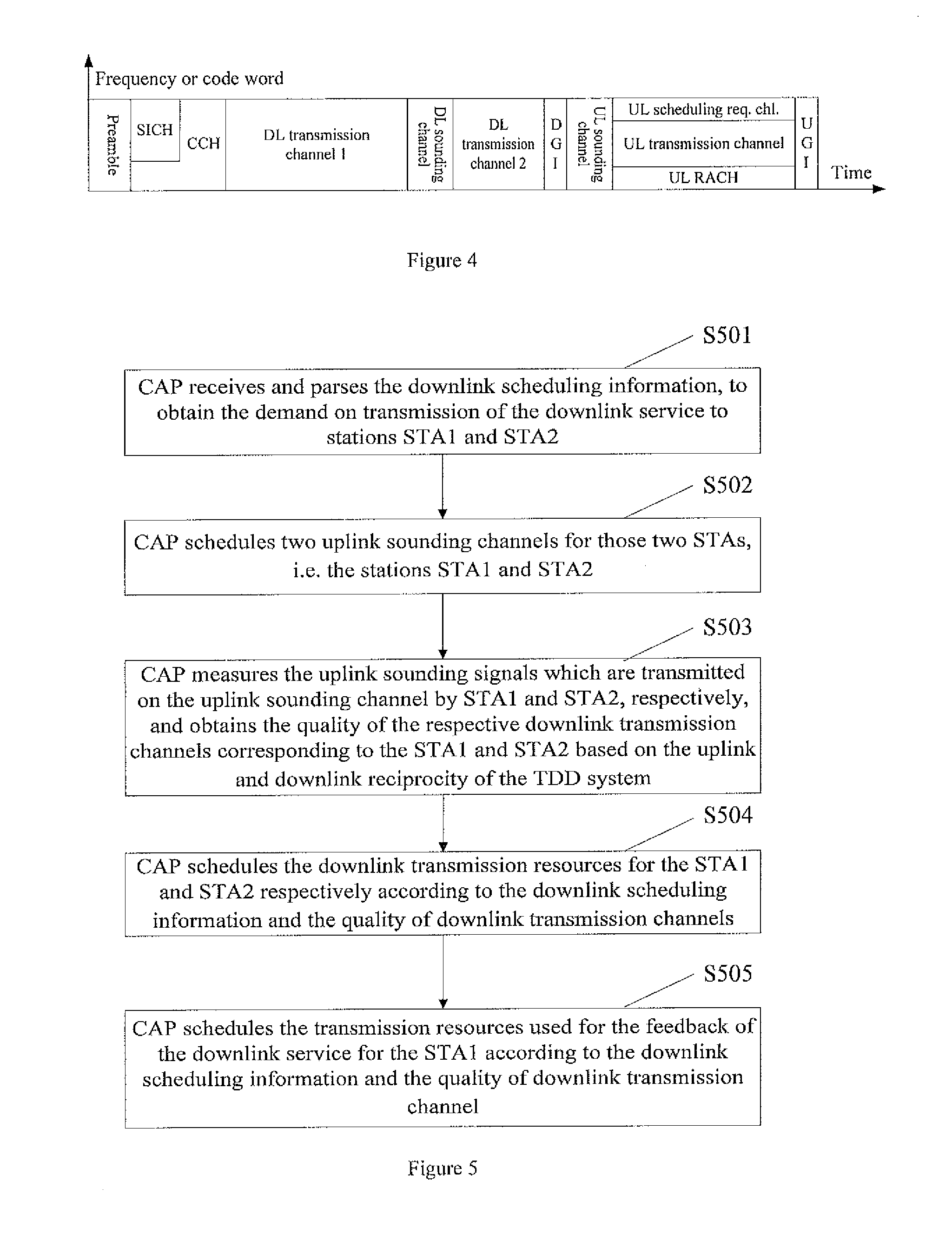Resource Scheduling Method and Device
a resource scheduling and resource technology, applied in the field ofwireless communication, can solve the problems of high waste of wireless resources, collisions, low efficiency of wifi systems, etc., and achieve the effects of improving system efficiency, improving system efficiency and performance, and better adapting to dynamic changes
- Summary
- Abstract
- Description
- Claims
- Application Information
AI Technical Summary
Benefits of technology
Problems solved by technology
Method used
Image
Examples
first embodiment
A First Embodiment
[0083]The frame structure in the present invention includes the downlink sub-frame and / or the uplink sub-frame, and the downlink sub-frame and the uplink sub-frame each are divided into different channels by functions. A guard interval (GI) exists between the downlink sub-frame and the uplink sub-frame, here, the transceiving guard interval from downlink to uplink is called a downlink guard interval (DGI), and the transceiving guard interval from uplink to downlink is called uplink guard interval (UGI).
[0084]The frame structure provided by the present invention is provided with at least a preamble sequence and a system information channel.
[0085]The preamble sequence is configured in the starting position of the frame structure, to realize the synchronization. The preamble sequence may be a short preamble sequence or a long preamble sequence. Among which, the short preamble sequence is mainly used for the coarse system synchronization, as well as frame detection, au...
application example 1
[0152]This application example provides a method for measuring the quality of a downlink channel through the uplink sounding channel based on uplink and downlink reciprocity (i.e. reciprocity between uplink and downlink) of the system to complete the downlink scheduling and transmission process, specifically as shown in FIG. 5, including the following steps:
[0153]Step S501: A CAP receives and parses the downlink scheduling information, to obtain the demand on transmission of the downlink service to stations STA1 and STA2.
[0154]The demand on transmission of downlink service includes the demand on scheduling of the STAs or different traffic flows of the STAs, for example, services to be scheduled and a queue length, demand on quality of service (QoS) of different services, and service priority. The demand on transmission of downlink service is carried by the downlink scheduling information.
[0155]Step S502: the CAP schedules two uplink sounding channels for those two STAs, i.ee the sta...
application example 2
[0163]This application example provides a case where the quality information of the channel is measured by the STA and fed back to the CAP, and the CAP completes the uplink scheduling and transmission process according to the quality information of the channel as fed back, specifically shown in FIG. 7, including the following steps:
[0164]Step S701: The CAP receives and parses the downlink scheduling information, to obtain the demand on transmission of the downlink service to the stations STA1 and STA2.
[0165]The demand on transmission of downlink service includes the demand on scheduling of the STAs or different traffic flows of the STAs, for example, services to be scheduled and a queue length, a demand on QoS of different services, and a service priority. The demand on transmission of downlink service is carried by the downlink scheduling information.
[0166]Step S502: the CAP schedules two CQI feedback channels for those two STAs, i.e. the STA1 and STA2.
[0167]Step S703: the CAP send...
PUM
 Login to View More
Login to View More Abstract
Description
Claims
Application Information
 Login to View More
Login to View More - R&D
- Intellectual Property
- Life Sciences
- Materials
- Tech Scout
- Unparalleled Data Quality
- Higher Quality Content
- 60% Fewer Hallucinations
Browse by: Latest US Patents, China's latest patents, Technical Efficacy Thesaurus, Application Domain, Technology Topic, Popular Technical Reports.
© 2025 PatSnap. All rights reserved.Legal|Privacy policy|Modern Slavery Act Transparency Statement|Sitemap|About US| Contact US: help@patsnap.com



